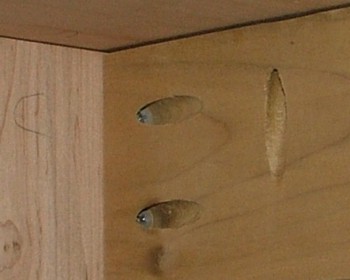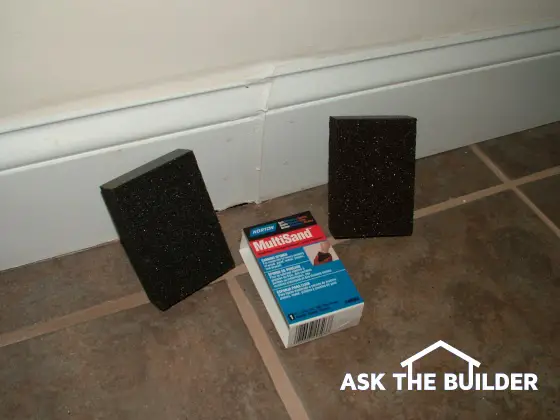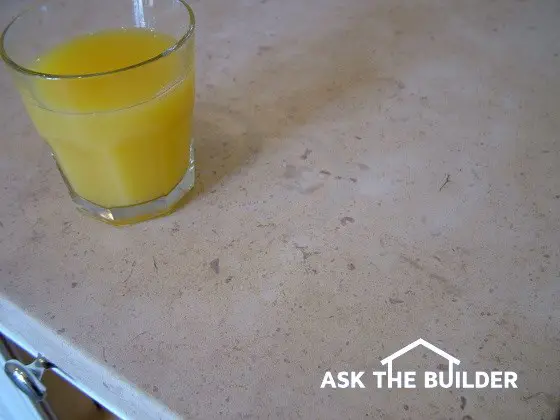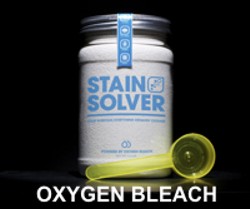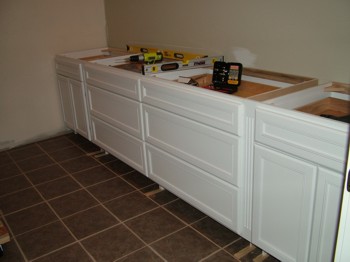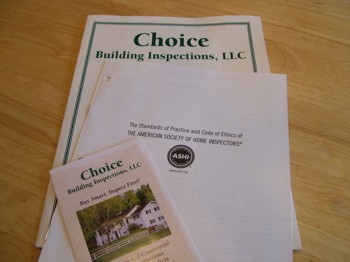What's in This Issue?
Latest News
Goofy Door Design
Upcoming Product Reviews
Comfortable and Sleek Desk Chair
Product Reviews Policy
Soft Soap
Socks on Drain Pipes
Accurate Level for your iPhone
Hoops and YoYo
Purchase a Lot NOW While Prices are LOW!
Latest Columns and Videos
Friendly Question Reminder!
If you have a question for me, don't hit the Reply button just yet. Go immediately to my web site and type in the keywords about your problem into my Search engine. The search box is at the top of every page of my web site. You could have your answer in seconds if you do this! Please pay attention to all links you see at my web site. The exact products and services you often need are right in front of you, and you might be ignoring them.
Latest News
If you're a new subscriber, this is *not* an ordinary newsletter. This issue has an eclectic mix of tips and information and a plethora of new columns and videos. Wait until you see all the new columns and videos below. You'll be busy for a while with all this new information! If you're not a new subscriber, you know I've been on a three-week hiatus. Here's why:
I started writing this a week ago, just after sunrise on a foggy morning sitting in a cottage that's nestled behind the dunes at the Atlantic Ocean. I was at the Inn by the Sea in Cape Elizabeth, Maine, finishing an intense two-day conference that is hosted by a secret Internet mastermind group I'm part of. I always come away with my brain filled to the brim with knowledge. The massive brain dump started just hours after I arrived. A few of my buddies and I were talking about the Stain Solver business. They gave me two ideas that will probably cause sales to triple this year. Holy moly! More about that in a future newsletter.
Another very dear friend reminded me at lunch that same day that I'm really overdue to send out a newsletter. Yes, it's been well over three weeks. I apologize for the lack of communication, but here's what's been keeping me busy besides the conference. Be aware that over the past three weeks there have been plenty of new tools and products streaming into the world headquarters for me to test and review. I'll share some of that just below.
The week I went back to Cincinnati to spend Easter with Kathy and Kelly was supposed to be restful. It was anything but. Three of the six days I was 1,000 miles west of New Hampshire, I was at the Stain Solver warehouse mixing and packing orders. April turned out to be an all-time-record sales month by a factor of three! This month is looking even better as the deck-cleaning season has just started in many parts of the nation. Acccccckkkkkkk! In case you don't know it, my Stain Solver is perhaps the safest and best product to use when cleaning a wood or even a composite deck.
Then, as soon as Meghan and I got back to NH, we turned the heat up on a remodeling project here at the lake house. You can see me in action in many of the videos and columns that are at the bottom of this newsletter. Oh my gosh, is it looking superb. Two weeks ago, we set the last cabinets, and installed the limestone countertops. When you slide your hand across the tops, they're as soft as a powdered baby's bum. The fossils in the limestone take your breath away they're so gorgeous.
While we were in Cincinnati, the official ice out happened at the lake. I believe the exact day was April 12th. I forgot how beautiful the lake is when the water moves back and forth instead of being frozen. And how is it the loons know the ice is gone? Within days of the ice disappearing, they were in the water quacking, hooting, calling and making all sorts of noise. I'm told they winter near the ocean. Do they fly back and forth each day hoping the ice is gone? All I can say is those birds make the coolest calls I've ever heard.
Finally, the weather was so nice three weekends ago, I spent three days up on the 90 acres where I'm building the new home. It was spiritual to be there. The waterfalls were roaring, and the solitude in the forest allowed me to really do a hard reset to my attitude after the winter of working. If you're stressed out about things, try to get away to some nearby park on a warm day and just relax or take some buttons with you and repair your clothes. Try to get outdoors and do your own hard reset.
Goofy Door Design
While at the conference, I shared a two-bedroom cottage with a long-time friend Steve. The cottage was really spacious with a giganzo living room and breakfast nook. But the shared bathroom was tiny as can be. It had this next-to-useless pedestal sink that was crammed into the corner. When the bathroom door was open, you couldn't stand in front of the sink, well maybe at an angle.
The architect must not have known about pocket doors. This situation would have been an excellent use of one of those bad boys. Pocket doors save valuable floor space in tight situations like this. If you want to get the pocket-door hardware and track I use in my current home, on all my past projects, and what I'll use in my new home, then visit this pocket-door page.
Upcoming Product Reviews
Here's a partial list of things I'm starting to test:
- A cordless tool set from Skil
- Ladders and platforms from Louisville Ladder
- Drywall tools from Marshalltown
- A compact vacuum cleaner
- Impulse Nail Guns from Paslode
- and much more!
Be sure to open all future newsletter issues so you don't miss these reviews.
Comfortable and Sleek Desk Chair
When you signed up for this newsletter, I got an email. From that I can tell a tiny bit about you. For example, if the @extension is a company name, you probably might sit in an office for eight hours or more working. Or maybe you work from home. As for myself, I sit at my desk way too much.
For years, I used to buy those inexpensive chairs you often see at the major nationwide office-supply stores. Most of the ones I got were uncomfortable and fell apart. I never stopped to do the math to count up the thousands of hours I sat in a chair working. Recently I did. The number is scary - it's way too high.
Recently, I acquired a Herman Miller Aeron chair. I can't say enough great things about it. I'm more comfortable, I'm more productive, I have no pain in my back anymore and the chair fits my body like a glove. It's no wonder as I was able to design it myself so it fits my height and weight! If you're tired of your office chair or the one you sit in at your home office, you should take a look at what I'm sitting in right now. I'll never go back to one of those cheap chairs. You can design and purchase your own chair here.
Product Reviews Policy
While I was at the secret conference with my friends, we discussed this newsletter and how I review products. When asked what happens when a product fails my testing, I exclaimed, "I don't say anything. I don't write about it in the newsletter as I just want my subscribers to get things that work well." One of my buddies mentioned, "Tim, do you tell your subscribers that? Do you tell them that things fail your tests? If not, you're making a mistake."
Yikes! I never thought of that. The point is I do test many things and some just don't meet my expectations. My thought all along was that if I couldn't say something positive, then say nothing at all. A bad review by me could produce long-term damage to a company. What's more, if a particular review is highly subjective without hard science behind it, that could also cause significant collateral damage.
Based upon input from my esteemed friends, I decided that the best course of action is to tell you how many products failed my tests in a particular week, but not the names of the things. I know this isn't the perfect solution, but I'm going to try it to see what happens.
For example, not too long ago I got a small blue cordless drill. It was like a toy. When turned on, the gears inside were so poorly matched, you could hear them grinding themselves into powder. Bottom Line: When you see a product mentioned in this newsletter, I tested it, it's very good or great quality and I'm using it at my own home.
Soft Soap
I get pitched by public relations (PR) companies each week. They know I have an audience. About two months ago, I was contacted by the agency that handles the PR for Soft Soap. Maybe you have some in your home. The PR person sent me a sample and followed up to see what I thought. She guessed - and correctly I might add - that a very large portion of my subscribers are women.
The sample set I received was a pump that fit on four bottles with different designs. Two looked like they would be on a counter at my grandmother's house. Very feminine indeed. The other two were not as masculine as I might like. Let's just say they didn't have pictures of bulldozers on them. The bottom line is that I test all sorts of things, even soap! But you won't find these bottles displayed in the room where I wash my hands. Give me a bar of Lava soap any day.
Socks on Drain Pipes
This is a very interesting email I received from Harish Pithadia from Peoria, Illinois:
"I hired a landscaper guy to do simple french drain and he put perforated pipe with socks in it but didn't put any rocks at bottom. I was wondering if you think it will work or do I have to do it again? I know you have article that stated one should put 2" of rock under the pipe and do NOT use a sock or filter fabric."
Harish, you may dodge the bullet and not have to start over. Why you didn't follow my advice I'll never know. Heavy sigh......... Here's the issue I have with geotextile filter fabrics and socks: they are made to STOP silt from moving through the fabric. They collect the silt and create a virtual dam. This is insane when it comes to a drainage pipe. You want water to readily ENTER the pipe, not try to fight it's way through silt or a fabric.
What's more, if you install the linear french drain the way I propose, then you'll never have an issue. Silt doesn't normally move sideways through the soil profile. You see silt after a storm in streams because it's coming from surface erosion from the raindrops that dislodge the soil particles and move them overland into streams. After a storm, the streams and brooks quickly return to the clear state. This is why well water is crystal clear. The water moving into a trench drain through the soil is clear so there is no need for filter fabric or a sock.
Accurate Level for your iPhone
Stanley Tools released an iPhone application that turns your iPhone into a fantastic level. This application is free, and it features several different styles of levels. Personally, I favor the traditional wood level you see in the app. It's very cool and easy to use. If you have an iPhone, just go to the Apps store and search for: Stanley Level. Enjoy!
Hoops and YoYo
About four years ago, my youngest daughter Kelly burst into my office, took control of my keyboard and blurted, "Dad, you have to watch this!" 'This' was an electronic greeting card featuring Hoops and YoYo, two very cute animated characters that will make you laugh for sure. Kelly and I spent an hour watching all we could, many over and over. We howled with laughter.
Having no fear of a "No" on the phone, I called Hallmark Greeting Cards and asked to speak to the creator indicating that I had an idea how I could help promote Hoops and YoYo. Believe it or not I got a call from one of the creators, Bob Holt. Bob is YoYo, the smaller green character with the long ears, and is one very creative and cool dude.
My rough idea was to create some sort of animation that would relate to my visitors. That's all I said on the phone, and it's all Bob had to hear. The old saying, 'Good things come to those that wait.', is true.
Bob was finally given clearance, two months ago, to create an amazing animation that I feel you'll love. When you get to the page, note that you can send it to a friend via email. Please do this and urge your friends to sign up for my newsletter. You'll see that form on the page. You don't need to subscribe - that's how you're reading this.
I also urge you to visit the official Hoops and YoYo site. Find the Coffee Jitters electronic card. You'll really like it if you drink coffee. It's one of my favorite animations.
Once you're at the Hoops and YoYo page of mine, be sure to click the Play button in the animation to start it. The animation is over two-minutes long and gets funnier as you listen. If you really like it, contact me. I'd love to forward your comments to Bob.
Purchase a Lot NOW While Prices are LOW!
This is an historic real estate market. It's a buyer's market. If you plan to eventually build a new home, NOW is the time to buy the lot. If you want to get the best lot and not make a mistake, you need my LATEST Lot Selection eGuide.
It's a compilation of all I've written on lots, and has all you need to ensure you will not end up with problems. I decided to sell it for just $7.00, but as always I give you a special price when a new product is released. You can have it now for only $4.99. That's a super deal to get all that information in one document you can easily print out. Go buy it now as I'm going to raise the price back up in just a week.
Latest Columns and Videos
We are backed up on content! Sorry about that. I urge you to make the time to read the columns and watch the videos. I have three more videos that have yet to be edited. These complete the series on installing tile. I show you exactly how to grout floor tile. I'm hoping we have those ready for you by the next newsletter.
Need to extend a tile floor? Here's one way to get the lines straight.
Thinset for ceramic tile floors. I explain what it is and how to mix!
Here is how to apply thinset to concrete.
The amazing DeWalt Wet Saw. You use it to cut tile.
How do you use a wet saw indoors and NOT splash water everywhere???
Here's a quick tip when removing drywall.
Wait till you read about the latest LED flashlight!
An inspection report is vital when you buy a home.
Are you going to tackle a cabinet-installation job? You better bone up!
Is a rock retaining wall in your future? Get some Advil or Aleve!
Limestone countertops are drop-dead gorgeous.
AsktheBuilder.com
